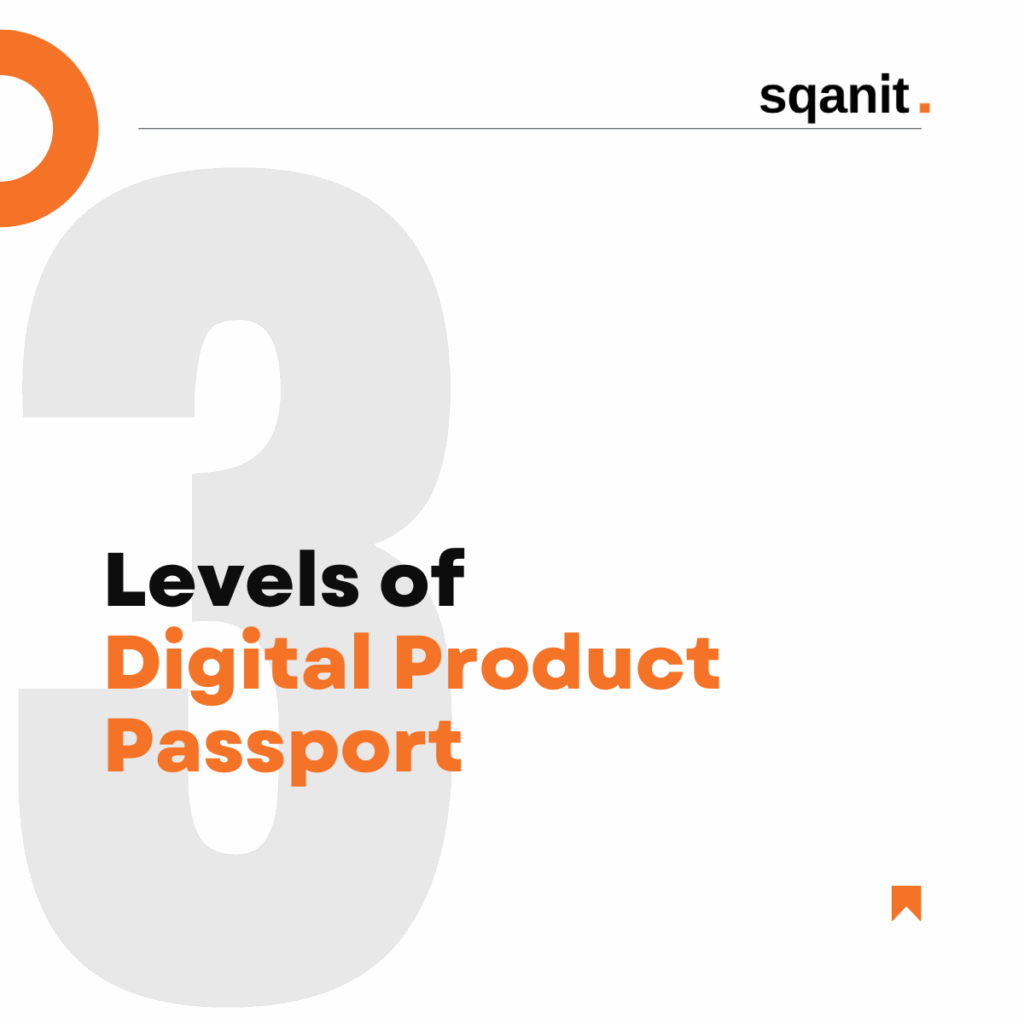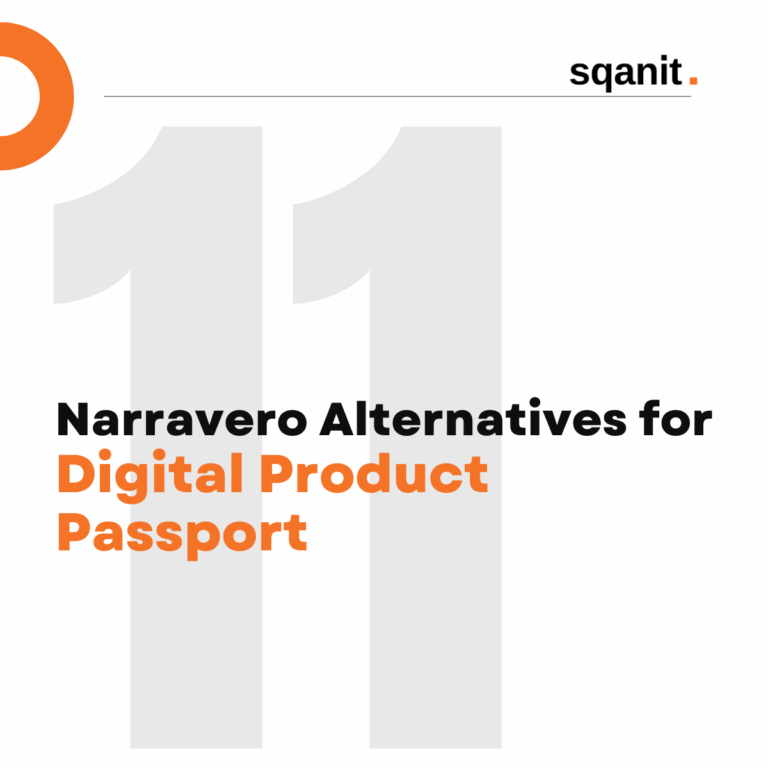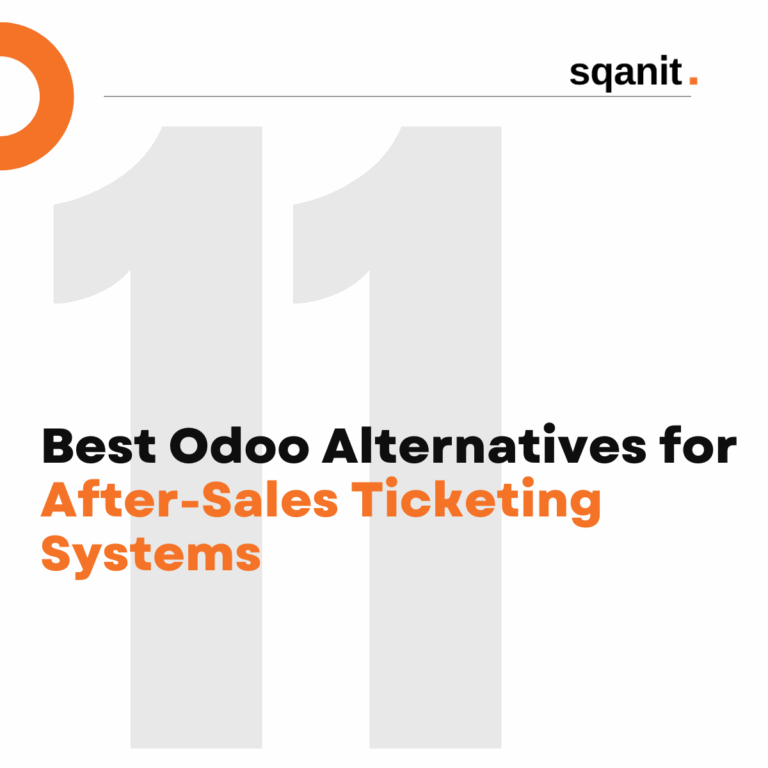Deciding Between Model-, Batch-, and Item-Level DPPs
Digital product passport levels—model, batch, and item—are quickly becoming a strategic necessity for manufacturers navigating new EU regulations.
Imagine this: You’re preparing your company for upcoming regulatory shifts, ESG demands, and customer expectations. You know a Digital Product Passport (DPP) is on the horizon. But one big question remains:
How detailed should it be?
Should you go broad and simple – or deep and granular?
If you’re a Marketing Manager at a manufacturing company, you’re not alone in asking this. The answer depends on your product, processes, and business goals. In this article, we’ll walk you through the three digital product passport levels of implementation., when to choose each, and why going deeper can supercharge your product experience.
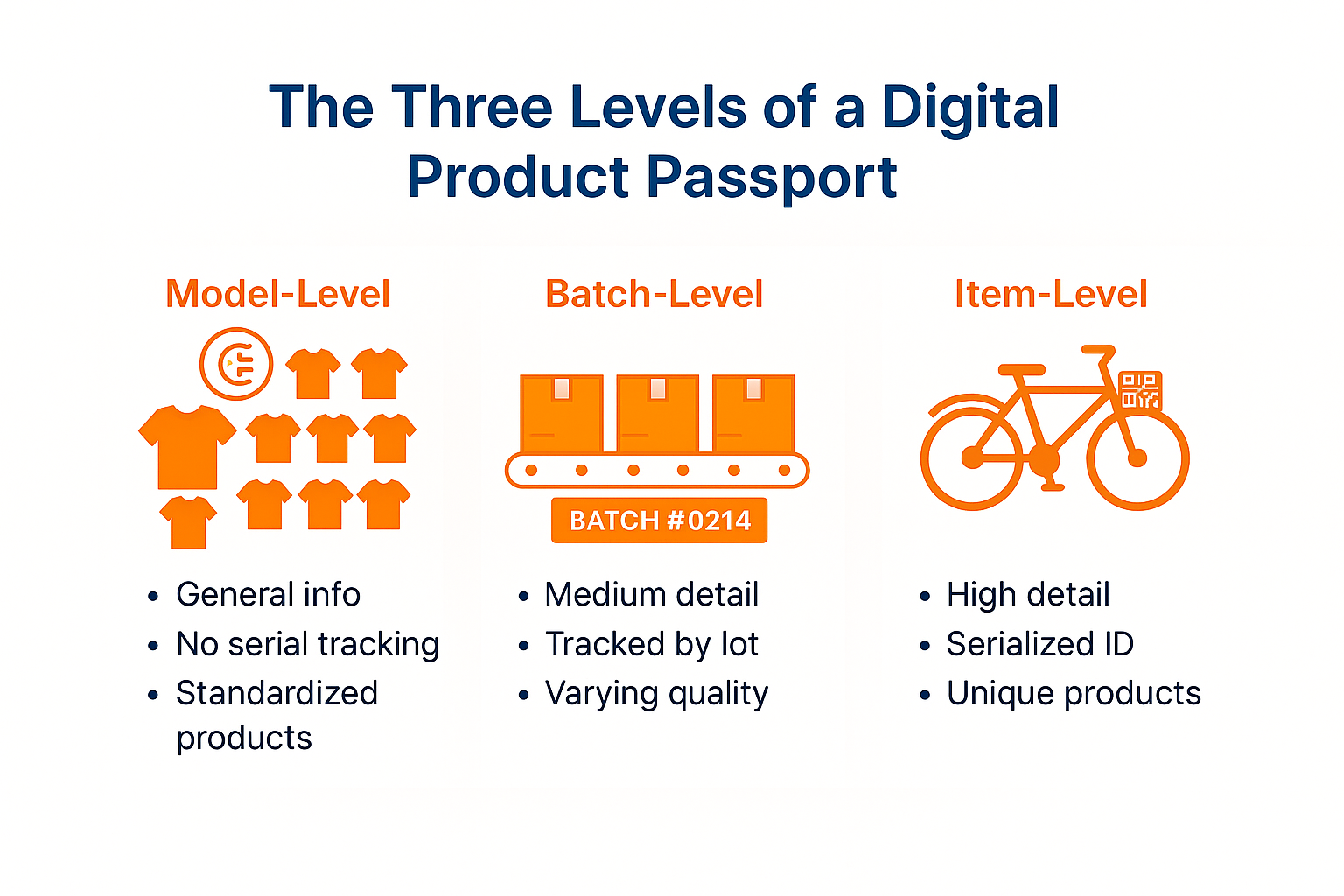
TL;DR
- Model‑level – fast & low‑cost for commodity, low‑variance goods
- Batch‑level – traceable by lot; balances compliance with effort
- Item‑level – unit serialisation unlocks services and meets 2027 EU requirements
The Problem: One Size Doesn’t Fit All
With the EU pushing for DPPs to enable circularity, transparency, and sustainability, many companies feel the pressure to “just get started.” But there’s a catch: the wrong level of detail can create cost, complexity, or compliance risk.
Opting for a high-detail, item-level DPP for a low-cost, high-volume good may be overkill. On the other hand, choosing a vague model-level DPP for a repair-heavy product could result in missed business opportunities – or worse, regulatory non-compliance.
This isn’t just a documentation problem. It’s a strategic product decision.
The Three Levels of Digital Product Passport (DPP)
Let’s break down the levels of a Digital Product Passport:
1. Model-Level DPP

A DPP for a product model or type.
- Best for: Standardized products with minimal variation
- No need for serial tracking
- Covers general info: materials, recyclability, etc.
Examples:
- Apparel (e.g., a blue T-shirt, size M)
- Mass-market furniture
- Commodity goods
Why it works:
Low-cost, low-effort. Perfect if your product doesn’t require detailed traceability.
2. Batch-Level DPP
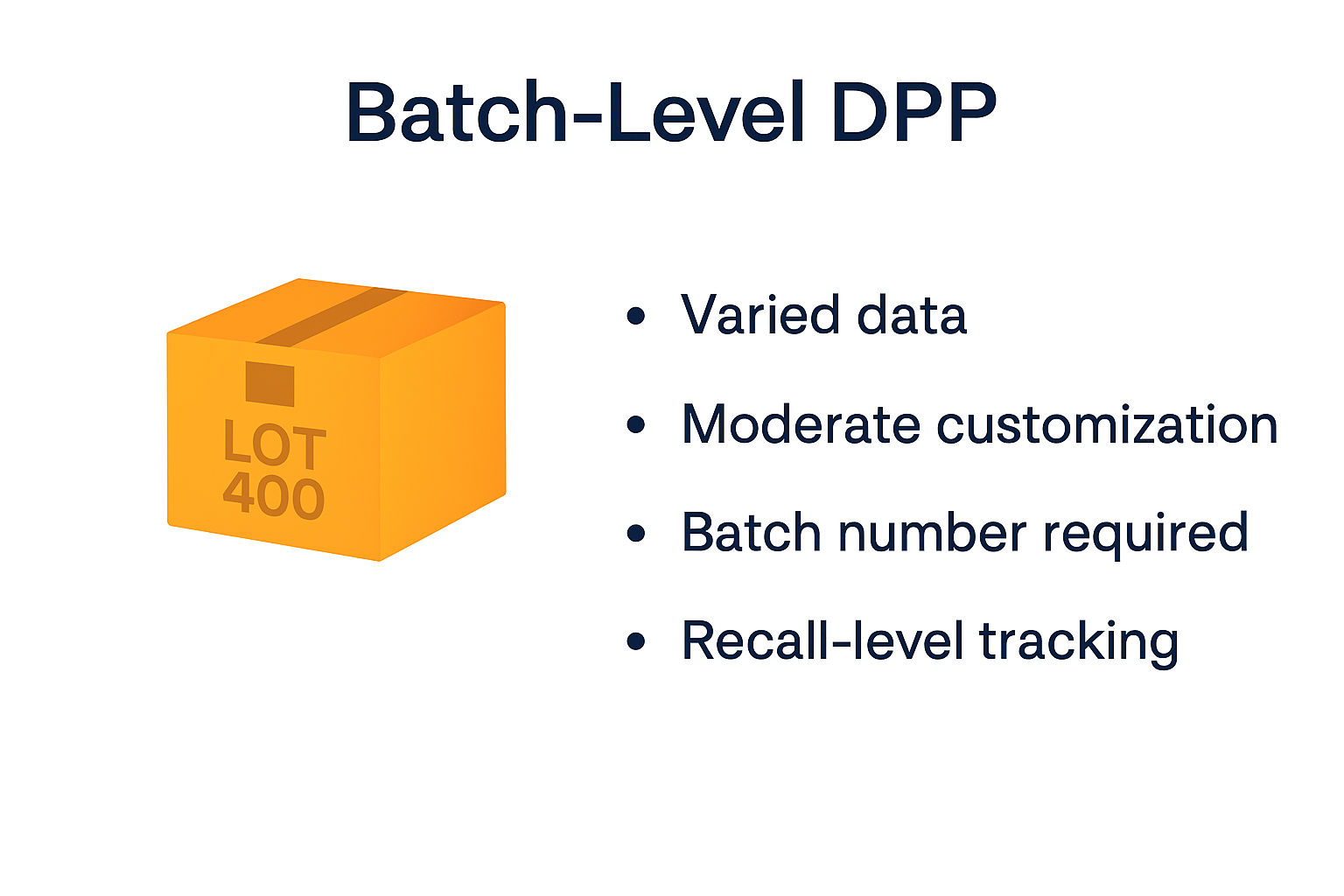
A DPP for a production lot or batch.
- Best for: Products where quality varies by batch
- Medium traceability: batch numbers for recalls or QA
- Often used in regulated industries
Examples:
- Cosmetics
- Pharmaceuticals
- Battery modules
Why it works:
Strikes a balance between traceability and cost. Ideal when batch variation matters.
3. Item-Level DPP
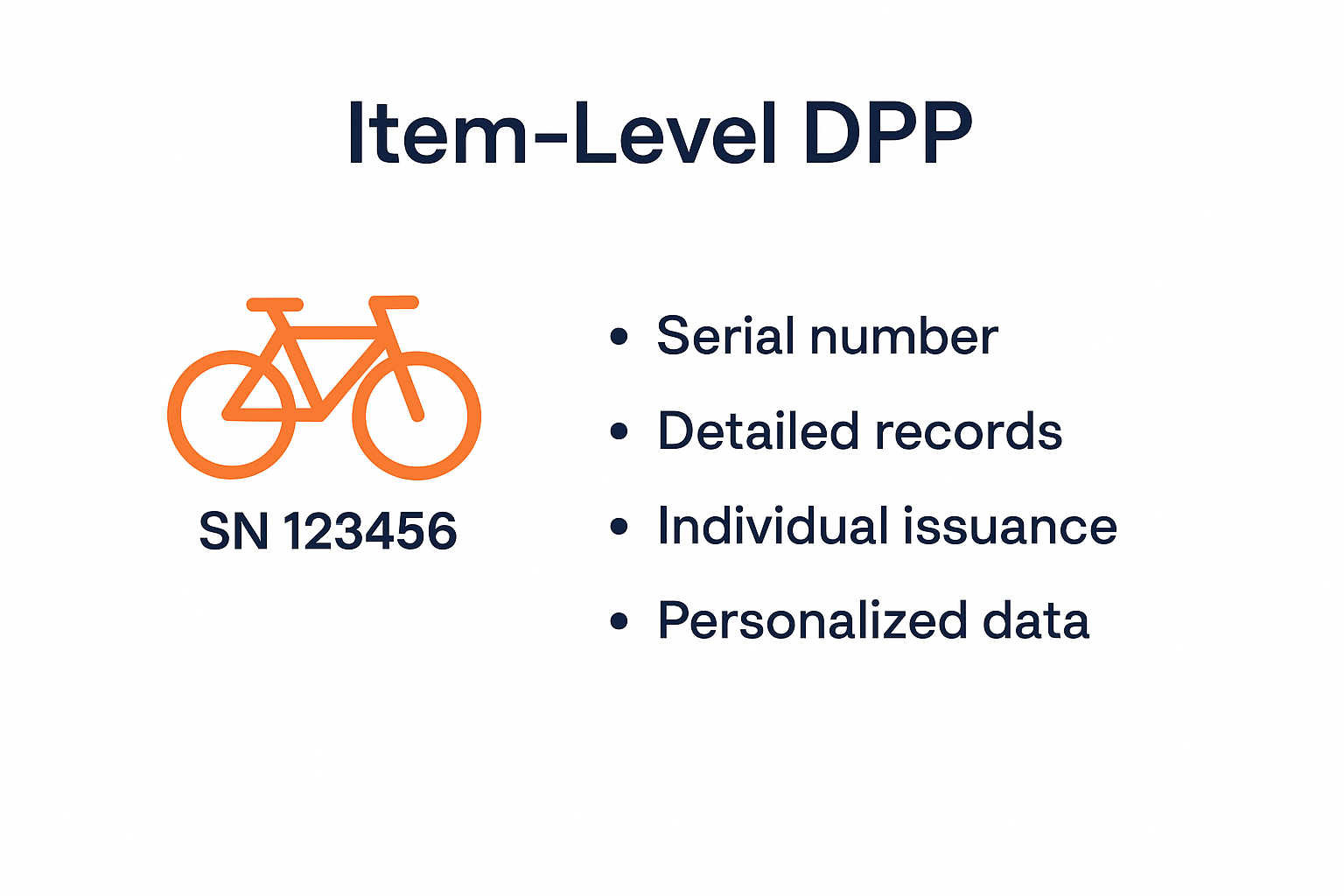
A DPP for each individual unit (via serial number).
- Best for: High-value, high-variance products
- Enables ownership tracking, repair history, and lifecycle data
- Often required by regulation or business model
Examples:
- Medical devices
- Industrial machinery
- Premium electronics (e.g., e-bikes, watches)
Why it works:
Maximum transparency. Item-level DPPs unlock advanced services like predictive maintenance, resale value tracking, and personalized support.
So, Which One Is Right for You?
Let’s compare them side-by-side:
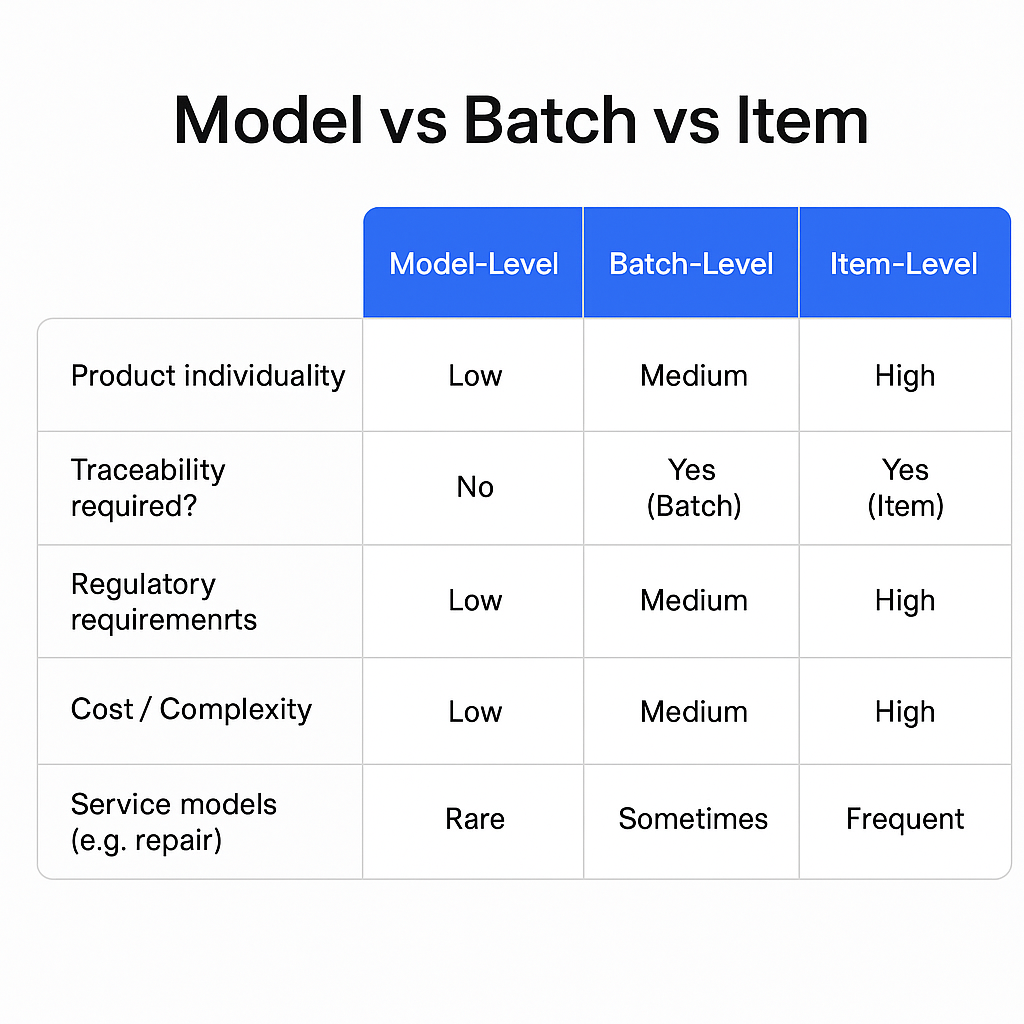
💡 The more granular your DPP, the more personalized the customer experience and operational intelligence you can build.
Strategic Benefits of Item-Level DPPs
Why go the extra mile?
- Product-as-a-Service: Want to offer leasing models or guarantee repairability? You need individual-level data.
- Support Automation: Link a QR code to a unit-specific help flow or service manual.
- Regulatory Peace of Mind: Be ready for coming EU rules requiring full traceability.
- Customer Loyalty: Build trust by showing exactly what is in their product.
Think of it like this: item-level DPPs turn anonymous goods into digital twins.
Real-World Use Case: From Label to Lifecycle
One sqanit customer — a medical equipment distributor — initially used model-level DPPs. But as service requests grew, they switched to item-level DPPs using serialized QR codes.
The result after 5 months?
- 40 % faster support resolutions
- 30 % reduction in service costs
- Customers rated the experience 4.7/5 for ease of use (See: Customer Effort Score: The Growth Metric You’re Overlooking)
The key was personalization: every device could tell its own story.
Final Thoughts: Start Where You Are, But Think Ahead
Not every product needs a hyper-detailed DPP. But as regulations and customer expectations evolve, the ability to scale from model-level to item-level becomes a strategic advantage.
The earlier you plan for granularity, the more future-ready your business becomes.
Frequently Asked Questions
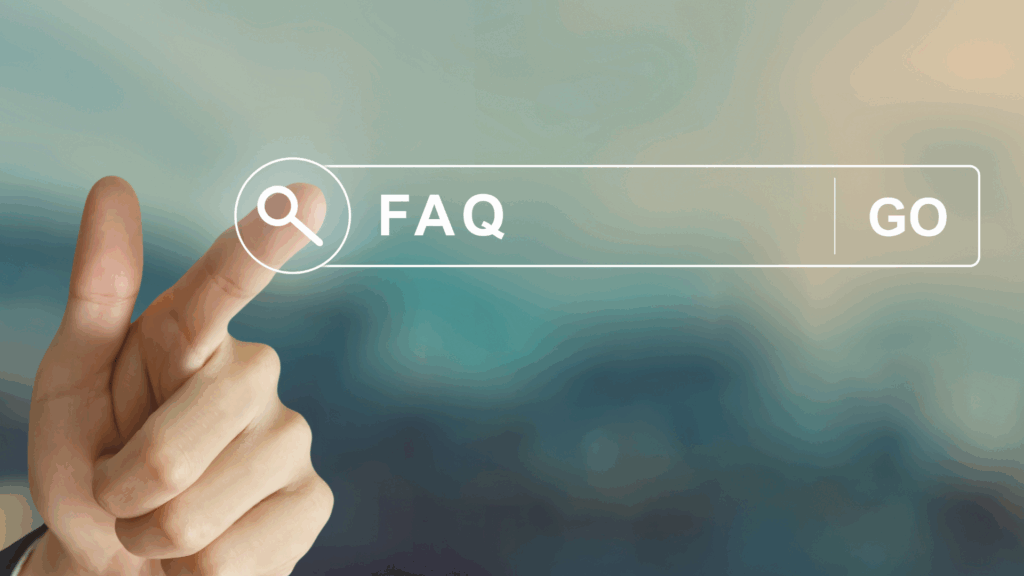
Q1: When will DPPs become mandatory in the EU?
A phased rollout starts in 2026 for batteries; most priority groups must comply by January 2027, and current roadmaps target full coverage by 2030. (voguebusiness.com)
Q2: What does an item‑level DPP cost to implement?
Early adopters report €0.03 – €0.12 per unit when QR‑code serialisation is integrated into existing PLM/ERP systems.
Q3: Which level is future‑proof?
Item‑level passports provide the greatest agility – you can always aggregate item data to batch or model, but not the reverse. If you sell high‑value or regulated products, start at item level.
➡️ Ready to Build Your Product Passport Strategy?
Discover how sqanit helps manufacturers turn physical products into smart, connected assets – no matter the DPP level.
👉 Visit sqanit.com to learn more

Leopold has several years of experience in B2B SaaS product marketing and a deep understanding of the software landscape and modern tooling. At sqanit, he is responsible for product communication – helping companies whose users don’t read manuals discover better alternatives.
